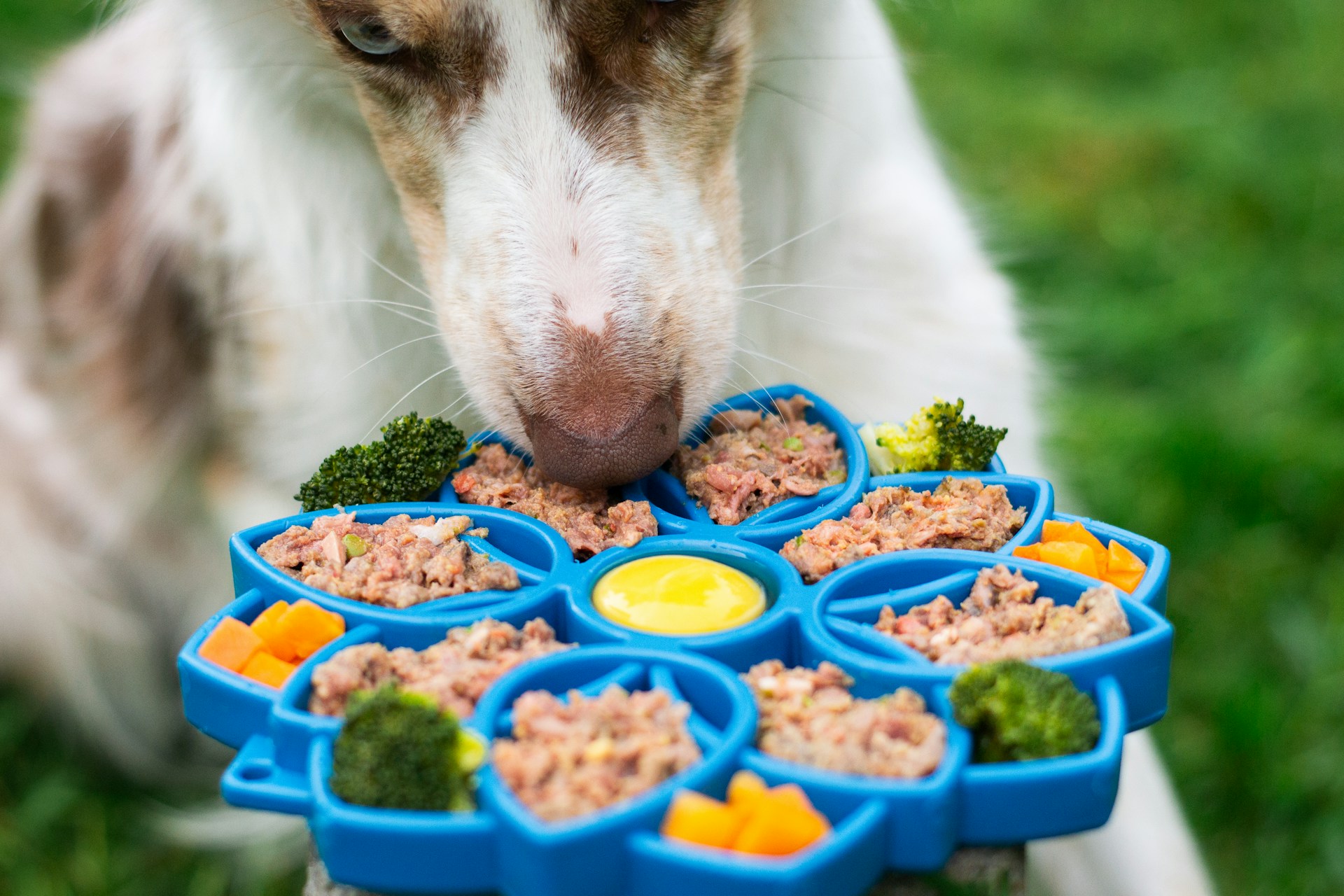A well-fed dog is a happy, energetic dog. The right diet fuels your dog’s daily activities, from playful romps to long walks. Whether your dog is a high-energy working breed or a relaxed lap dog, their food plays a huge role in their vitality. This guide covers how to create a dog energy diet that boosts stamina, supports health, and keeps your pup ready for action. From choosing energy-packed foods to setting feeding schedules, let’s explore how to optimize your dog’s nutrition with tips from Friends With Tail.
Why Energy Levels Matter
Your dog’s energy levels affect their quality of life. A diet that supports energy ensures they can play, exercise, and stay alert without crashing or gaining weight. Low energy can signal poor nutrition, especially in active breeds like Australian Shepherds or Jack Russell Terriers. Proper nutrition also supports muscle recovery, mental focus, and a strong immune system. For puppies and working dogs, energy needs are higher, while senior or less active dogs require lighter diets to avoid lethargy. Feeding for energy means matching your dog’s diet to their lifestyle for optimal health.
Foods That Boost Dog Energy
Certain ingredients are key to fueling your dog’s energy. Focus on these:
- High-Quality Protein: Chicken, turkey, or fish provide amino acids for muscle strength and sustained energy. Aim for 25-30% protein for active dogs.
- Complex Carbohydrates: Brown rice, oats, or sweet potatoes offer slow-release energy, preventing spikes and crashes.
- Healthy Fats: Fish oil or chicken fat (10-15%) provides concentrated energy for stamina. Omega-3s also reduce inflammation in active dogs.
- Vitamins and Minerals: B vitamins from eggs or liver boost metabolism, while antioxidants from fruits like blueberries support recovery.
Look for foods labeled for “active” or “performance” dogs, as they’re formulated for higher energy needs.
Feeding Schedules for Active Dogs
A consistent feeding schedule helps maintain energy levels. Active dogs, like Border Collies or Retrievers, benefit from two meals a day—morning and evening—to fuel their activities. Feed puppies (under 1 year) three to four smaller meals to support growth and energy. For working dogs, offer a small meal before exercise and a larger one after to aid recovery. Avoid feeding right before intense activity to prevent digestive issues. Use measuring cups to ensure proper portions, adjusting based on your dog’s weight and activity level. Fresh water should always be available to support hydration and energy.
Adjusting Diets for Activity Levels
Your dog’s activity level determines their calorie and nutrient needs. High-energy dogs, like agility competitors, need calorie-dense foods with higher protein and fat (30% protein, 15-20% fat). Moderately active dogs, like those with daily walks, thrive on balanced diets with 20-25% protein and 10-15% fat. Less active or senior dogs need lower-calorie foods to prevent weight gain, with 18-22% protein and 8-12% fat. Monitor your dog’s body condition—ribs should be felt but not seen—and adjust portions if they gain or lose weight. Consult your vet for breed-specific recommendations.
Monitoring Weight and Health
Regular monitoring ensures your dog’s diet supports their energy without causing health issues. Weigh your dog monthly and check their body condition score (BCS) to maintain an ideal weight. Look for signs of a balanced diet: a shiny coat, consistent energy, and firm stools. Lethargy, dull fur, or digestive issues may indicate a need for dietary changes. Pair a good diet with regular exercise, like walks or playtime, to maximize energy and health. Annual vet check-ups can catch nutritional deficiencies early. For more active dog nutrition tips, visit Friends With Tail.
Wrapping Up
Feeding your dog for optimal energy is all about choosing the right foods and tailoring their diet to their lifestyle. By focusing on high-quality proteins, complex carbs, and healthy fats, you can boost your dog’s vitality and keep them ready for any adventure. A consistent feeding schedule and regular health monitoring ensure long-term benefits. Start building your dog’s energy diet today and explore more dog health tips at Friends With Tail to keep your pup thriving.

